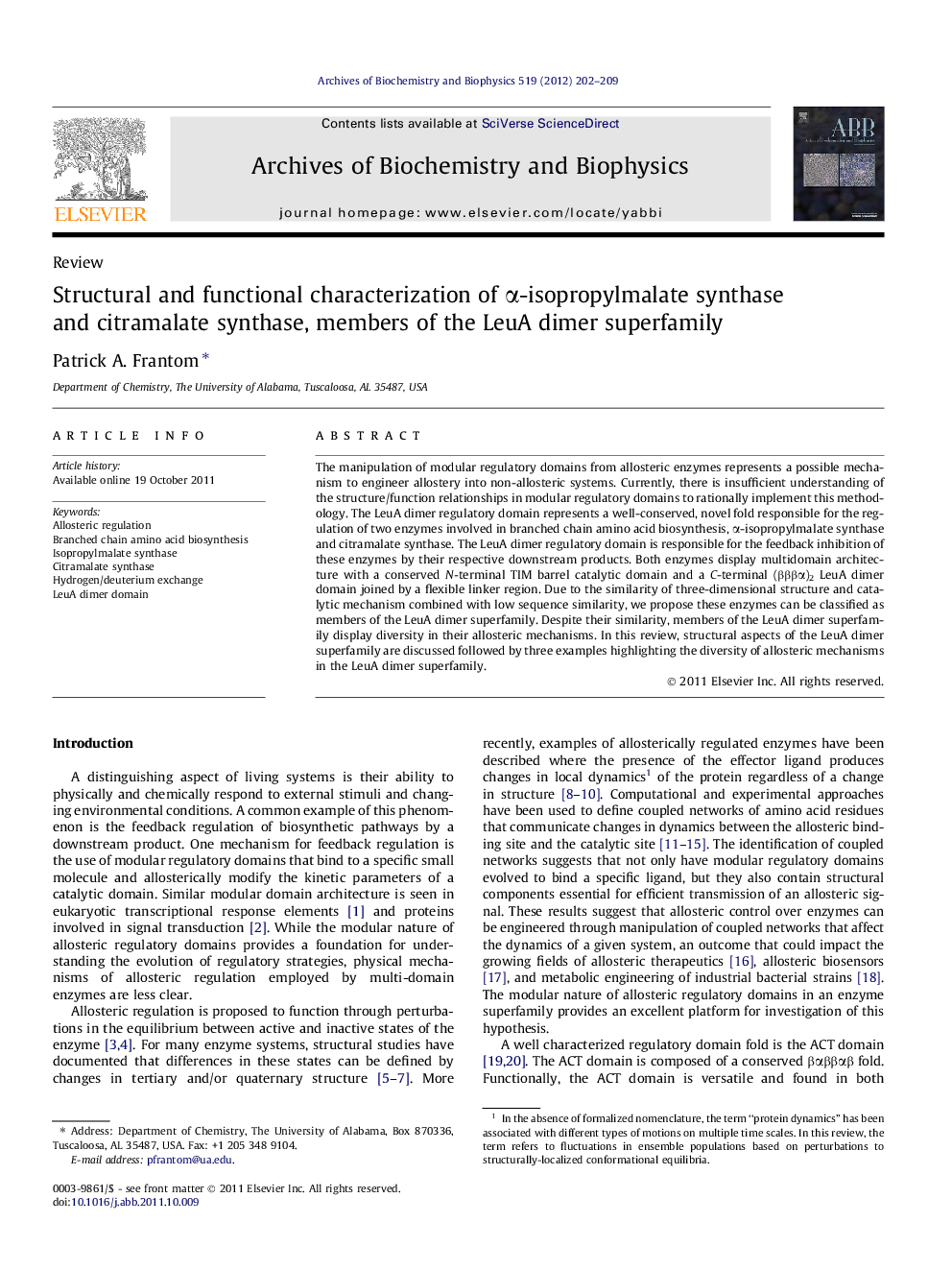| کد مقاله | کد نشریه | سال انتشار | مقاله انگلیسی | نسخه تمام متن |
|---|---|---|---|---|
| 1925612 | 1536396 | 2012 | 8 صفحه PDF | دانلود رایگان |

The manipulation of modular regulatory domains from allosteric enzymes represents a possible mechanism to engineer allostery into non-allosteric systems. Currently, there is insufficient understanding of the structure/function relationships in modular regulatory domains to rationally implement this methodology. The LeuA dimer regulatory domain represents a well-conserved, novel fold responsible for the regulation of two enzymes involved in branched chain amino acid biosynthesis, α-isopropylmalate synthase and citramalate synthase. The LeuA dimer regulatory domain is responsible for the feedback inhibition of these enzymes by their respective downstream products. Both enzymes display multidomain architecture with a conserved N-terminal TIM barrel catalytic domain and a C-terminal (βββα)2 LeuA dimer domain joined by a flexible linker region. Due to the similarity of three-dimensional structure and catalytic mechanism combined with low sequence similarity, we propose these enzymes can be classified as members of the LeuA dimer superfamily. Despite their similarity, members of the LeuA dimer superfamily display diversity in their allosteric mechanisms. In this review, structural aspects of the LeuA dimer superfamily are discussed followed by three examples highlighting the diversity of allosteric mechanisms in the LeuA dimer superfamily.
► The LeuA dimer superfamily is allosterically controlled by feedback regulation.
► Members share a conserved modular domain structure despite low sequence identity.
► Despite shared structure, superfamily members exhibit diverse allosteric mechanisms.
► Experiments to define structure/function relationships in allostery are discussed.
Journal: Archives of Biochemistry and Biophysics - Volume 519, Issue 2, 15 March 2012, Pages 202–209